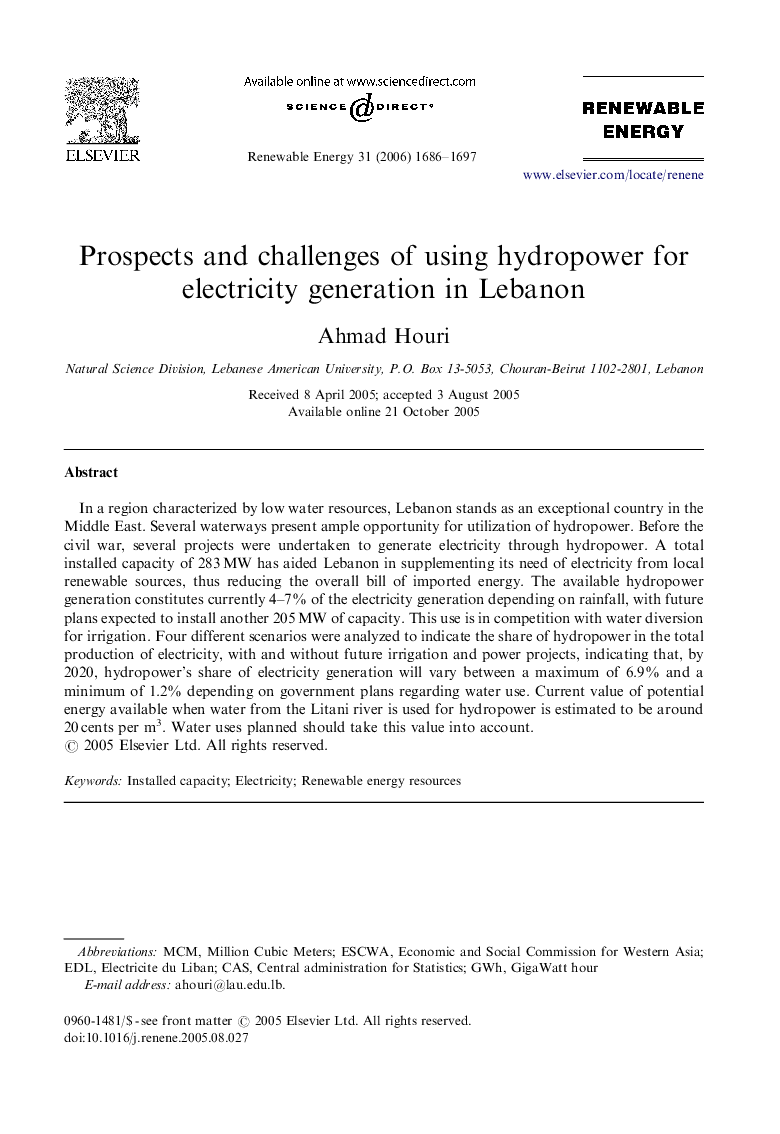| Article ID | Journal | Published Year | Pages | File Type |
|---|---|---|---|---|
| 303122 | Renewable Energy | 2006 | 12 Pages |
In a region characterized by low water resources, Lebanon stands as an exceptional country in the Middle East. Several waterways present ample opportunity for utilization of hydropower. Before the civil war, several projects were undertaken to generate electricity through hydropower. A total installed capacity of 283 MW has aided Lebanon in supplementing its need of electricity from local renewable sources, thus reducing the overall bill of imported energy. The available hydropower generation constitutes currently 4–7% of the electricity generation depending on rainfall, with future plans expected to install another 205 MW of capacity. This use is in competition with water diversion for irrigation. Four different scenarios were analyzed to indicate the share of hydropower in the total production of electricity, with and without future irrigation and power projects, indicating that, by 2020, hydropower's share of electricity generation will vary between a maximum of 6.9% and a minimum of 1.2% depending on government plans regarding water use. Current value of potential energy available when water from the Litani river is used for hydropower is estimated to be around 20 cents per m3. Water uses planned should take this value into account.
